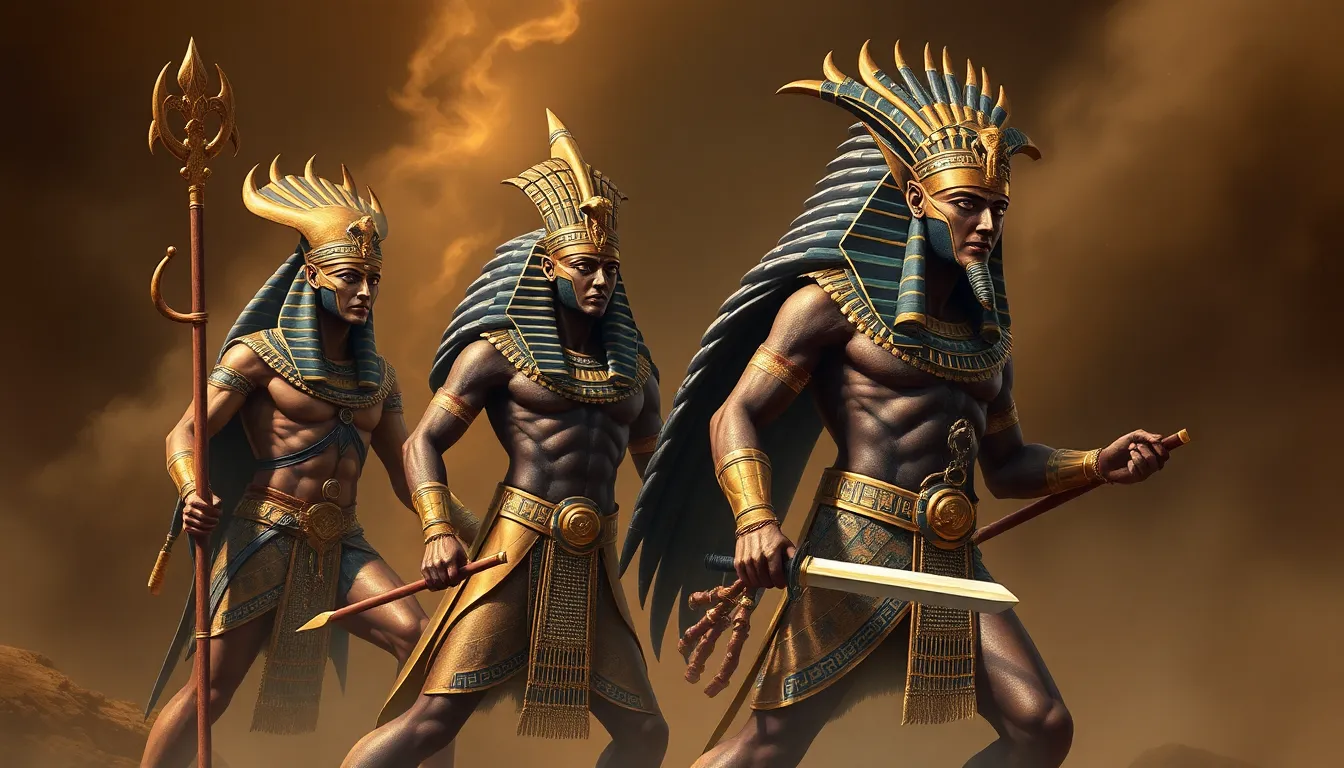Fierce Partnerships: The Warrior Gods of Ancient Egypt and Their Allies
I. Introduction
The ancient Egyptians had a rich tapestry of mythology, where gods and goddesses played integral roles in both the natural world and human affairs. Among these deities, the warrior gods stood out for their fierce protective qualities and their participation in the cosmic struggles that defined Egyptian belief systems. These warrior gods were not solitary figures; rather, they often formed alliances that were crucial for maintaining order and balance in the universe.
This article aims to explore the relationships and alliances of warrior gods in ancient Egyptian mythology, focusing on how these partnerships influenced Egyptian society and religious practices.
II. The Pantheon of Warrior Gods
Key figures among the warrior gods of ancient Egypt include:
- Horus – The falcon-headed god, symbolizing kingship and the sky.
- Set – The god of chaos, storms, and the desert, often depicted as a figure of conflict.
- Sekhmet – The lioness goddess, associated with war and healing, embodying both destruction and protection.
Each of these deities had unique attributes and symbols that reflected their roles in protecting Egypt and its people:
- Horus: Represented by the Eye of Horus, symbolizing protection and royal power.
- Set: Often depicted with a curved snout and a forked tail, symbolizing his chaotic nature.
- Sekhmet: Associated with the lioness, her fierce demeanor represented both war and the healing power of the sun.
III. The Nature of Divine Alliances
In ancient Egyptian mythology, partnerships among gods were not merely symbolic; they had significant implications for the balance of cosmic order. The collaboration of deities often reflected the historical context of the time, particularly during periods of conflict or upheaval.
Some notable aspects of divine alliances include:
- Strategic Partnerships: Many myths illustrate how gods banded together to overcome common enemies, embodying the idea that unity is strength.
- Rituals and Ceremonies: Divine alliances were often commemorated through rituals that reinforced the importance of these relationships to the people.
IV. Horus and His Allies
Horus, perhaps the most revered of the warrior gods, served as a protector and avenger of his father, Osiris. His story is deeply intertwined with the themes of loyalty and justice.
Key alliances of Horus include:
- Isis: As his mother and a powerful goddess in her own right, Isis provided Horus with guidance and support in his battles against Set.
- Osiris: The resurrection of Osiris by Isis set the stage for Horus’s ultimate battle against Set, symbolizing the struggle between order and chaos.
Mythological narratives illustrate Horus’ partnerships in battle, particularly in the epic confrontations with Set, where he demonstrates not only strength but also the support of his allies in the quest for justice.
V. Set and His Complex Relationships
Set is a multifaceted deity, often portrayed as a god of chaos and disorder. His rivalry with Horus is one of the most famous narratives in Egyptian mythology, representing the eternal struggle between good and evil.
Set’s alliances are complex and include:
- Apep: A serpent deity representing chaos and the enemy of the sun god Ra, Set’s association with Apep highlights his role in the cosmic struggle.
- Underworld Gods: Set also allied with certain deities in the underworld, where he played a role in maintaining the balance of power.
The duality of Set’s nature is evident in myths where he alternates between ally and enemy, showcasing the intricate relationships he navigates in the divine realm.
VI. Sekhmet: The Fierce Protector
Sekhmet is renowned for her fierce disposition and association with warfare, often depicted as a lioness. She embodies the duality of destruction and healing, making her a complex figure in the pantheon of Egyptian gods.
Some key points about Sekhmet include:
- Role in Warfare: Sekhmet was called upon to protect the pharaoh and the nation from invaders, showcasing her importance in military endeavors.
- Collaborations: She often collaborated with other deities, such as Ra, in combating chaos and ensuring the safety of Egypt.
Myths highlighting Sekhmet’s partnerships reveal her fierce nature, as well as her capacity for healing, illustrating the balance of power she represents.
VII. The Impact of Warrior Gods on Egyptian Society
The influence of warrior gods extended beyond mythology into the practical affairs of ancient Egyptian society. Their divine partnerships shaped military strategies and state-sponsored rituals.
Key impacts include:
- Military Strategies: The worship of warrior gods was integral to military campaigns, with rituals performed to invoke their protection.
- State Ceremonies: Pharaohs often aligned themselves with these deities to legitimize their rule and strengthen their position in times of conflict.
- Cultural Legacy: The stories and depictions of warrior gods influenced art, literature, and temple worship, embedding these partnerships in the cultural consciousness of the Egyptian people.
VIII. Conclusion
In conclusion, the fierce partnerships among warrior gods in ancient Egyptian mythology played a crucial role in shaping the identity of the civilization. These alliances not only reflected the complexities of divine relationships but also emphasized the importance of unity in overcoming chaos and ensuring the prosperity of Egypt.
The enduring fascination with these warrior deities continues to capture the imagination of scholars and enthusiasts alike, highlighting the timeless nature of their stories and the lessons they impart about power, loyalty, and the struggle between order and chaos.




